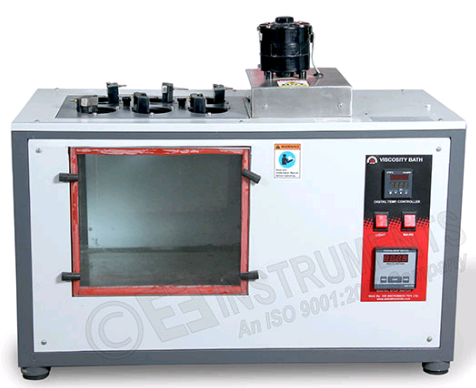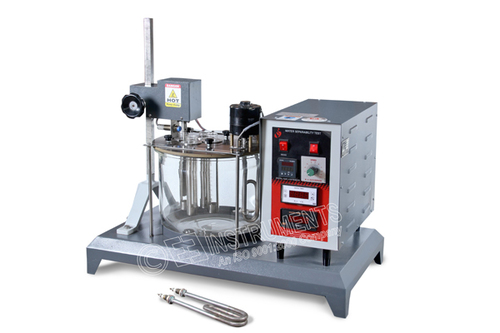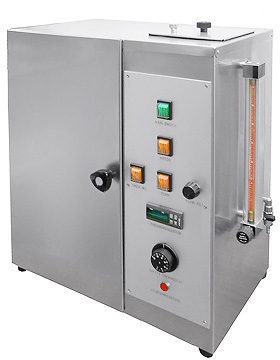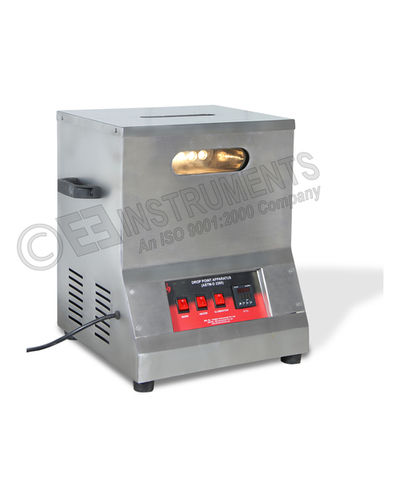RING AND BALL APPARATUS ELECTRICALLY OPERATED
Price 1.00 INR/ Piece
RING AND BALL APPARATUS ELECTRICALLY OPERATED Specification
- Features
- Electrically heated bath, Two steel balls, Brass rings, Temperature control
- Automation Grade
- Semi-automatic
- Usage
- Petroleum Testing Equipment
- Mounting Type
- Tabletop
- Accuracy
- 0.5C
- Humidity
- Ambient
- Resolution
- 0.1C
- Response Time
- Immediate
- Application
- This apparatus is meant for determinationofsofteningpoint of bituminous materials
- Port Size
- Standard water bath port
- Display Type
- Analog thermometer/optional digital
- Max Height
- Approx. 250 mm
- Operating Voltage
- 230V AC
- Number of Specimens
- 2
- Power Supply
- 230V AC, 50 Hz
- Measuring Range
- 30C to 100C
- Gas Pressure
- Ambient
- Product Type
- Ring and Ball Apparatus Electrically Operated
- Test Range
- Softening point typically 30C to 100C
- Interface Type
- Manual control switches
- Specimen Size
- Ring inner diameter: 17 mm, Ball diameter: 9.5 mm
- Frequency
- 50 Hz
- Temperature
- Up to 100C
- Machine Weight
- Approx. 2.8 kg
- Test Speed
- Manual dip
- Test Width
- Standard ring diameter: 28 mm
- Control Mode
- Electrically Operated
RING AND BALL APPARATUS ELECTRICALLY OPERATED Trade Information
- Minimum Order Quantity
- 1 Piece
- Supply Ability
- 100 Pieces Per Month
- Delivery Time
- 4 Week
- Sample Policy
- Contact us for information regarding our sample policy
- Packaging Details
- Wooden Box / Corrugated Box
- Certifications
- ISO 9001 : 2015
About RING AND BALL APPARATUS ELECTRICALLY OPERATED
Also called Softening Point Apparatus. This apparatus is meant for determinationofsofteningpoint of bituminous materials according to IP 58 and IS 1205. Softening point is that temp. at which the specimen under test becomes soft enough to allow a steel ball of specific dimension to fall a required distance under test condition. Theapparatus consist of Glass beaker of heat resistant glass of internal dia 8.5 cm x 12 cm depth, Two steel balls each of 9.5mm dia, Two tapered brass rings, Two ball guides, ring stand and a MOTORIZED stirrer. Electrical motorized with heater andtemp. regulator with DC motor
Further details available on our website.
The Price mentioned here are subject to change as per the capacity,specifications and application of the user.
Precision Petroleum Testing
Designed for accurate measurement of softening points in bituminous materials, this apparatus combines electrically-heated immersion technology with a high-quality glass/fiber bath. It offers precise control and reliable repeatability, fulfilling IS: 1205, ASTM D36, and IP 58 requirements. The compact tabletop unit accommodates two specimens, provides rapid response, and allows manual operation, making it ideal for petroleum product laboratories.
Robust Construction and Safety Features
The apparatus is made with a corrosion-resistant heating element and a durable bath of borosilicate glass or heat-resistant fiber. Brass rings and plated steel balls ensure longevity, while safety is prioritized with fused power input and a grounded body. Operating at 230V AC and 50 Hz, its suitable for various ambient conditions and features accessories for convenient handling, including a ball centering guide and ring holder.
FAQs of RING AND BALL APPARATUS ELECTRICALLY OPERATED:
Q: How does the electrically operated Ring and Ball Apparatus function in determining softening points?
A: The apparatus heats a bituminous sample in a controlled water bath, allowing a plated steel ball to sink through the softened material. The apparatus records the temperature at which the ball contacts a defined point, indicating the materials softening point.Q: What types of testing standards does this equipment conform to?
A: This Ring and Ball Apparatus is compliant with IS: 1205, ASTM D36, and IP 58. These standards specify methods for measuring the softening point of bitumen and similar materials, ensuring accuracy and reliability for international testing requirements.Q: Where is the apparatus typically used, and what are its main applications?
A: It is commonly used in petroleum and asphalt testing laboratories, research facilities, and quality control departments. Its primary application is to determine the softening point of bituminous and thermoplastic substances, which is critical for assessing suitability in paving or roofing.Q: What features ensure accuracy and safety during operation?
A: Accuracy is maintained through an immersion-type, corrosion-resistant heater and a high-resolution thermometer (0.1C), with 0.5C measurement accuracy. Safety is supported by a fused, grounded power input and robust construction, minimizing operational risks.Q: How is calibration performed on this apparatus?
A: Calibration is carried out manually using a reference standard. The temperature sensor (either a mercury or alcohol thermometer) is checked against this standard to ensure precise readings during every test cycle.Q: What accessories are included, and how do they support the testing process?
A: Essential accessories such as the ball centering guide, ring holder, and a beaker are included. These components facilitate accurate placement of balls and rings, enhance measurement precision, and simplify the overall test procedure.Q: What are the benefits of using a semi-automatic, electrically operated setup for ring and ball testing?
A: The semi-automatic design and electric heating allow for consistent temperature control, reduced manual intervention, immediate response, and reliable repeatabilitysignificantly improving efficiency and confidence in petroleum testing results.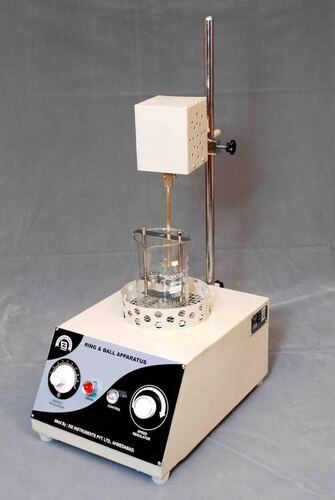
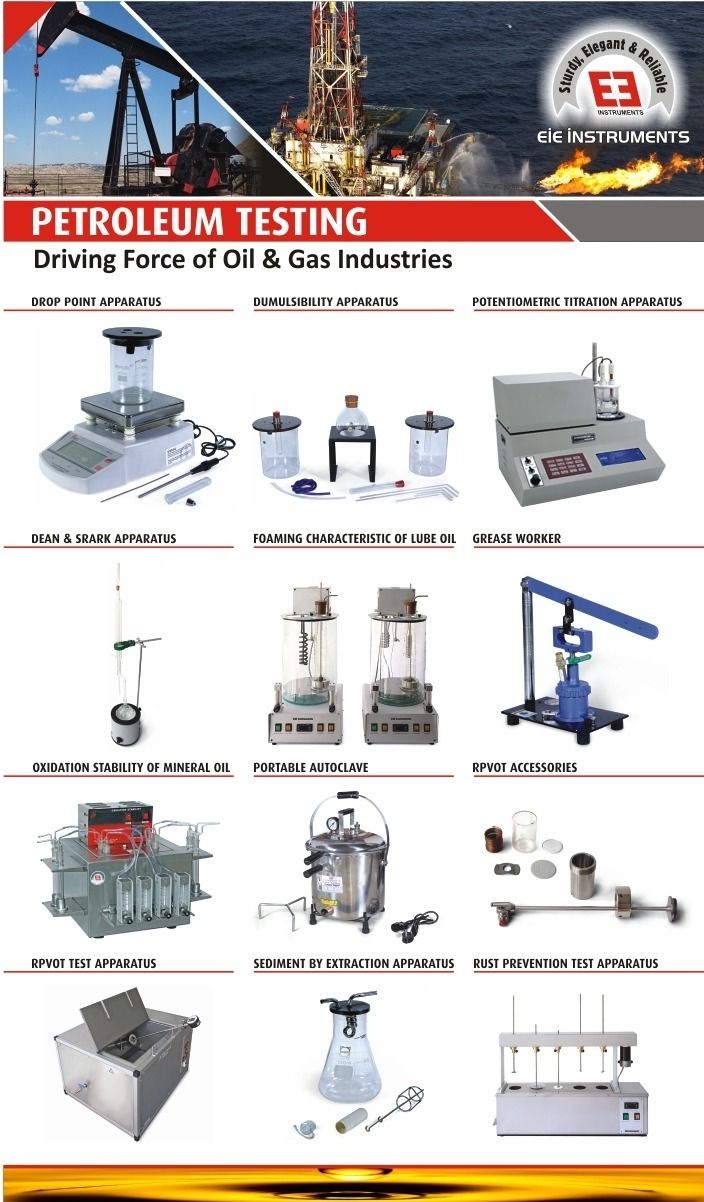

Price:
- 50
- 100
- 200
- 250
- 500
- 1000+
More Products in Petroleum Testing Equipments Category
Ultra Low Temperature Kinematic Viscosity Bath
Price 1.00 INR / Piece
Minimum Order Quantity : 1 Piece
Product Type : ULTRA LOW TEMP. KINEMATIC VISCOSITY BATH
Usage : PETROLEUM TESTING EQUIPMENTS
Voltage : 230 volt Volt (v)
Power Supply : 230 volt, 50HZ. Single Phase. AC Supply
Emulsion Test-water Separability Test Apparatus-Manual Model
Price 1.00 INR / Piece
Minimum Order Quantity : 1 Piece
Product Type : EMULSION TESTWATER SEPARABILITY TEST APPARATUSMANUAL LIFT & PLACEMENT
Usage : Petroleum Testing Equipment
Voltage : 230 Volt (v)
Power Supply : 230 Volts, 50 Hz, Single phase,AC Supply
Grease Water Washout Tester
Price 1.00 INR / Piece
Minimum Order Quantity : 1 Piece
Product Type : GREASE WATER WASHOUT TESTER
Usage : Petroleum Testing Equipment
Voltage : 230 Volt (v)
Power Supply : 230 Volts, 50 Hz, Single Phase, AC Supply
Drop Point Apparatus for Lubricating Grease
Price 1.00 INR / Piece
Minimum Order Quantity : 1 Piece
Product Type : DROP POINT APPARATUS FOR LUBRICATING GREASE
Usage : This test method covers the determination of the dropping point of lubricating grease
Voltage : 230 Volt (v)
Power Supply : 230 Volts, 50 Hz, Single phase, AC Supply
 |
EIE INSTRUMENTS PVT. LTD.
All Rights Reserved.(Terms of Use) Developed and Managed by Infocom Network Private Limited. |

 Send Inquiry
Send Inquiry
